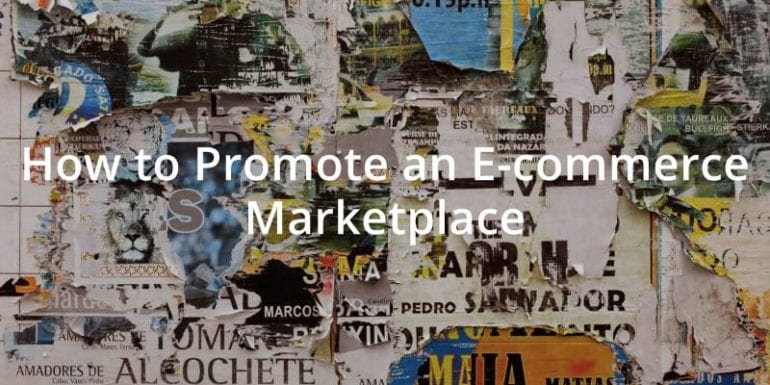How to Promote an E-commerce Marketplace
The competition within the e-commerce industry is tighter than ever. To keep your web marketplace thriving, you have to put significant effort into marketing and promotion.
But where should you concentrate all your efforts? Should you throw all your budget to drive traffic to your online marketplace, catch up with customers who purchase through mobile apps, or make your relationships with sellers your main priority?
In such a fast-changing environment, the best you can do is to take a deep breath, calm down, and focus on defining an approach that best fits your virtual shopping mall type and audience.
You may also be interested:
online marketplace center promotion
1. Customers’ Need Is Your Marketplace Success Cornerstone
Trying to explore all promotion techniques that pop up every hour in the constantly boiling water of the e-commerce market can overwhelm even hardy marketers.
Building promotion solely with the focus on your marketplace advantages that you risk to mismatch with your client’s ever-changing expectations is also a bad idea.
Concentrating on your customers instead, you get a detailed picture of your audience’s characteristics and needs. With this in mind, you can easily define how your online trading platform can fit those needs, and select marketing instruments accordingly.
1.1 Define Your Marketplace Format
Whether you are a passionate niche player or your dream is to beat the huge peers like Amazon or eBay on their own playground, knowing your marketplace type helps you define the consumer’s needs that you can serve the best.
If your web marketplace format is vertical and sells one-type products from many sources, outline the value-added services that you provide to customers and turn it into a promotion leverage.
A good example is TrueFacet.com—a shopping mall that sells jewelry from many sources and guarantees the authenticity of its costly items.
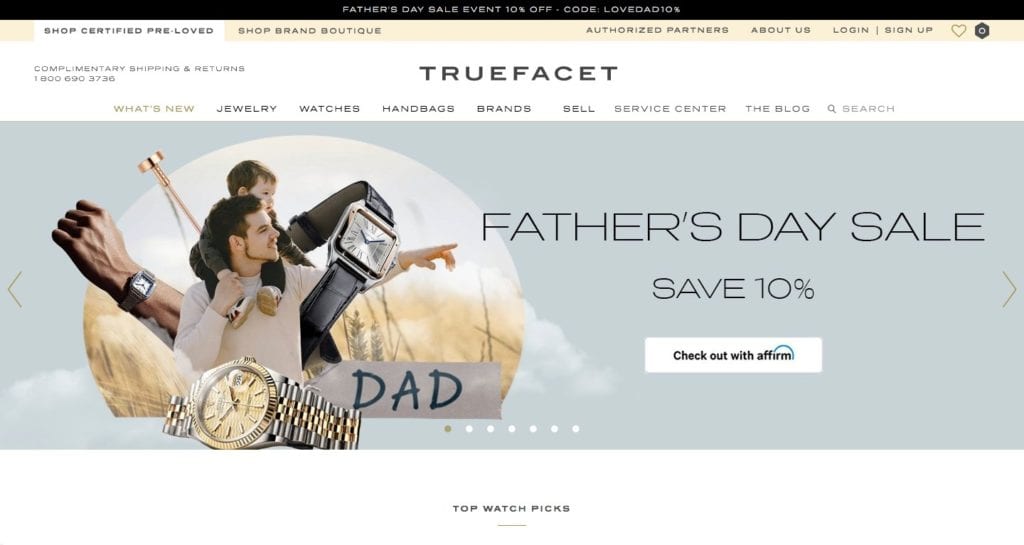
Being a horizontal marketplace means you are selling online products of many types, matching certain customer’s needs, and building promotion ideas around those needs.
For example, Dote helps women shop for multiple clothes from retailers utilizing the same app instead of downloading a single one for each shop.
This case shows the importance of knowing your customers’ needs and daily routine as well.
1.2 Build a Flawless Understanding of Your Customers
Leveraging customer data collected within your Internet marketplace will help you customize the promotion activities of your online shopping mall.
Align your special offers and sales to customer’s buying behaviour. This would help you put items that your clients would love to buy right in front of them exactly at the time they are able to do it.
A great example of a marketing campaign based on an audience comprehensive understanding is a ShopClues video campaign:
Using customer’s buying behavior data, the marketplace team found out that clients purchasing activities are boosted during their everyday commute back home from the office. The virtual mall leveraged this traffic jam issue and turned time-wasting into a daily fun-time in a way that clients can’t wait to begin.
Also, they considered their audience—Indian consumers—core demographic characteristics and habits. A traditional way of shopping at local and street-side open markets on their way back home from work was taken into account.
As a result, the company established a daily sale offer from 6 to 8 pm to embrace the time customers spend in traffic, feeling bored and tired. To fix that, the marketplace offered its customers tempting and refreshing sales exactly at the time that clients were eager to buy.
The campaign brought a 40% rise in traffic on first two weeks.
It demonstrates how the initial understanding of your customers can increase your engagement with them and boost your sales.
It’s not necessary to create an expensive video content and a large-scale campaign to achieve such a result. The clue here is a flawless understanding of your customer’s daily activities, obstacles, and needs.
A plain email campaign or a simply designed sale offer that catches your audience needs and lifestyle and brings a value at the right time and place, will show impressive results as well.
Building awareness about your audience, bear in mind that both sellers and customers are your clients, but require a different approach.
1.3 E-commerce Customers Funnel
As ChannelAdvisor research reveals an e-commerce customer funnel reflecting the way online consumers are making a buying decision.
To create a customized consumer journey that would embrace your online marketplace client’s typical behaviour, align this funnel to your shopping mall format and the audience. Using such a comprehensive mapping of your customer buying journey, you can easily create a promotion plan that best fits your clients’ needs.
Building marketing activities to influence vendors is a different story.
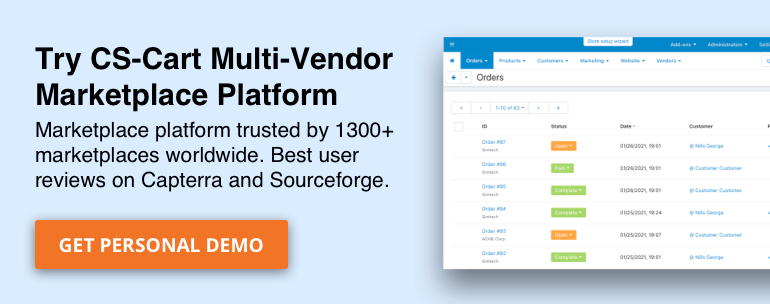
True Experience #1
Simos Kitiris, the co-founder of Yumbles, a yummy hand-crafted food marketplace, gave us a short interview about how they drive traffic and promote their brand
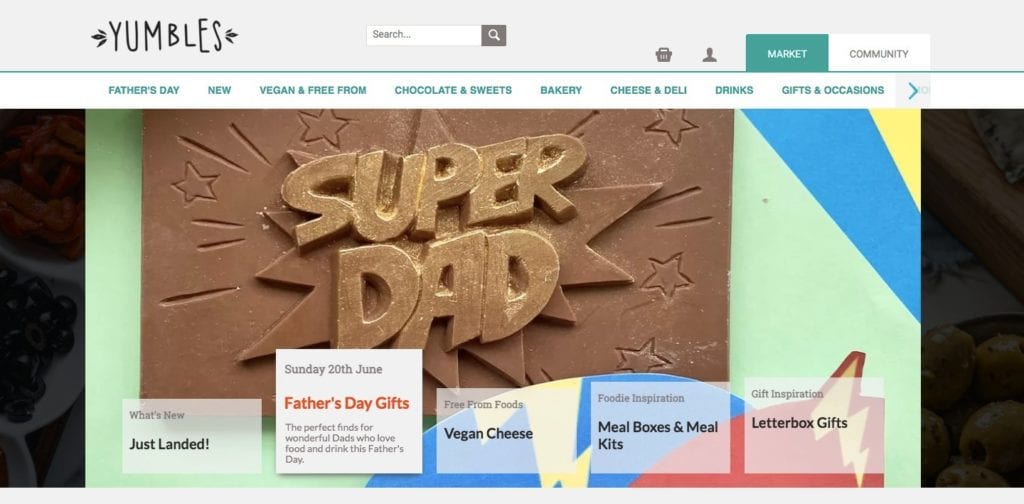
— Hello, Simos! So, what promotion channels do you use to increase the Yumbles brand awareness?
— As a marketplace, we feel it’s important to use a variety of methods to attract customers and getting the Yumbles brand out there—this is particularly true for virtual malls as there are many different categories of products, and what works for some might not necessarily work for others. We always try to strike a balance between paid and organic methods. As you’d expect we are present in all the big online channels (Google, Facebook, and so forth) while at the same time trying to get as much PR exposure as possible. Being mentioned by bloggers and other influencers is also important to us as we believe that in this way we can reach a more targeted audience than the bigger channels, so it’s something we also try to do.
— What channels do work best for you?
— For us, it’s more of a case of what products work for which channels. It’s something we keep experimenting with and measuring so that we can match the two effectively. The main reasons we believe that sometimes certain methods or channels don’t work is that there is either not a good match in terms of the demographic reached or that the intent is not there i.e. you might be reaching the right demographic but at the wrong moment. Similarly, certain channels can be very effective for Yumbles especially at certain times of the year as well exactly because the intent is there to buy, which we found helps conversions massively. It’s very important to remember that seasonality can make a big difference in certain campaigns.
— Can you share with our readers any results of PR campaigns?
— While we can’t share any detailed numbers for obvious reasons, we have seen conversion rates increase by as much as double following PR mentions. Obviously PR has an impact in organic traffic too so it’s something worth considering.
We have also managed to really improve conversion rates on the site by careful optimisation and experimentation. It’s always worth considering the lifetime value of users acquired via different campaigns as conversion rates might not be telling the whole story—good tracking is always the key!
2. Make Your Online Vendors Your Best Promotion Drivers
Serving your sellers’ marketing needs is a direct way to gain traffic to your marketplace.
Support vendors with guidelines and tips to enhance their marketing and promotion efforts. That’s how you’ll make their advertising budgets bring a double-income for your vendors’ business growth and for your online mall traffic numbers.
Share promotional strategies that proved its efficiency on practice with vendors and make sure they can access all the educational resources within your marketplace infrastructure easily.
2.1 Email Marketing Strategy
Email marketing is the main pillar of the e-commerce industry. As soon as you become an email marketing strategies expert, start sharing your knowledge with vendors on a regular basis.
Add tips and tricks, guidelines, and templates to your multi vendor mall educational section—a blog or a seller community. This will help vendors create their own email strategies, to motivate and encourage their customers to visit your web marketplace and buy their goods.
2.2 Share Marketplace Statistics with Your Vendors
Besides proved marketing tools and practices, create an effective way of sharing your virtual mall statistics with sellers.
This will help them build their promotion efforts on a basis of actual and constantly refreshing data, making those activities much more efficient.
eBay shares a bunch of different reports with its sellers and affiliate partners, giving them an opportunity to leverage a global marketplace statistics to improve individual performance.
Not necessary to adopt expensive business intelligence tools at the very beginning. You can start sending out a regular newsletter sharing data sheets with statistics with your online sellers. Advise them about the best way to use it and where they should pay attention to see customer’s buying behaviour patterns. This will help sellers improve their marketing by using proper data insights.
2.3 Reward System
Establish a system that highlights vendors achievements—such as shipping time, product listing, and others. This will grow a competitive spirit within your shopping mall and will emphasize vendor’s advantages towards customers.
AppExchange, the app marketplace, offers a special badge system to motivate its sellers.
Through those badges, vendors can show the achievements they gained, not just within the platform, but on social media as well.
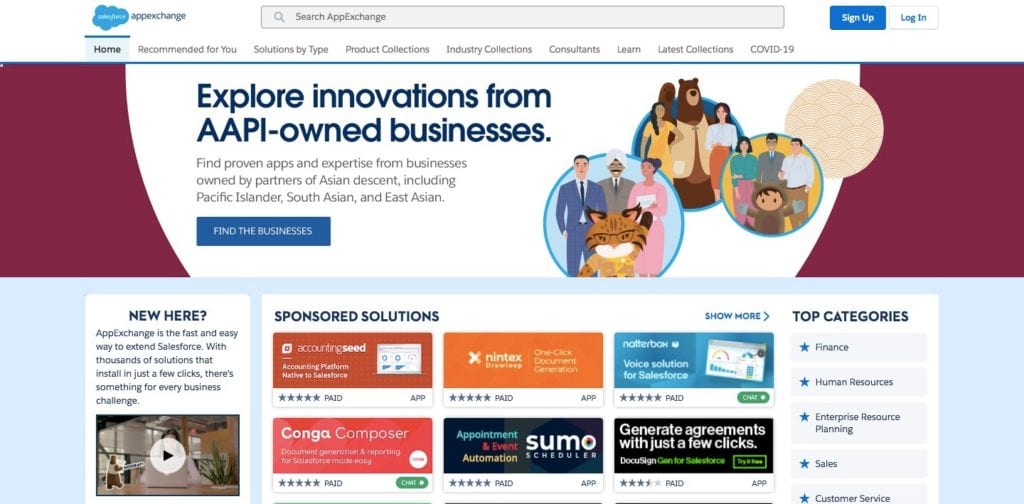
This adds credibility to vendors, helps to increase their brand awareness over social media, and boost your multi vendor ecommerce platform reputation among vendors and customers.

True Experience #2
Nisha Jeelani, CEO at Halal Genie, told us how they promoted their food eCommerce marketplace and what results they got
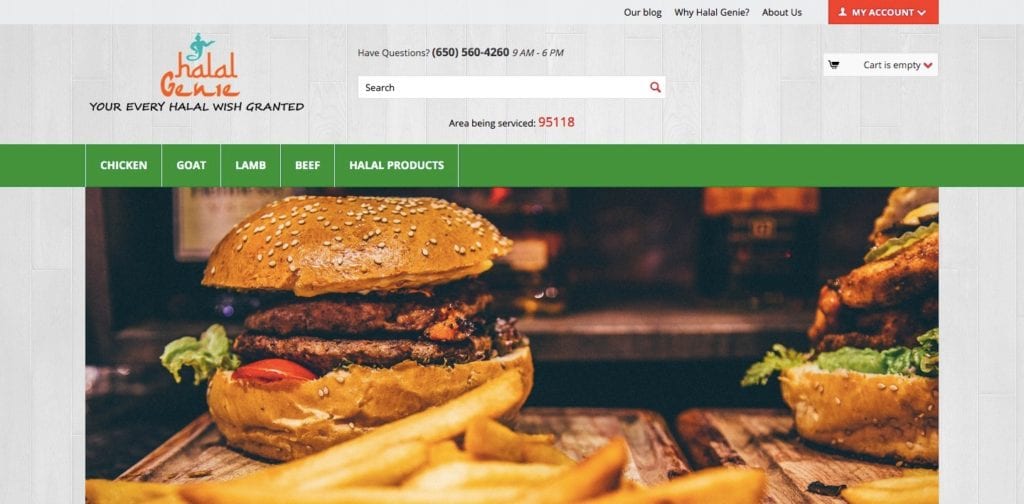
— Nisha, what methods did you use to promote Halal Genie on the Internet to attract customers and let more people know about it?
— I paid for Google Adwords and Facebook campaign to promote my multi vendor ecommerce website. I also created a Google My Business page, a Bing Business page and a Facebook Verified Business Page.
— What methods worked and what didn’t? Share some numbers and statistics.
— Google Adwords gave me 20,000 views in 30 days. I had around 300 clicks. Google has a keyword search which is helpful. Facebook campaign gave me 2,000 views in 2 days with 52 clicks.
3. Enrich Your Promotion with the Industry Valuable Insights
Learning from successful peers is inevitable when you play in such a high-competitive market.
Let’s take the case of Seismic Audio as an example. The vendor has increased its sales by 1,250% in nine months when it started collaborating with the online retail businesses promotion experts.
Taking this impressive example and turning it into a best practice for your online vendors can help you achieve more traffic and revenue.
Amazon is making a great job in understanding its audience needs and constantly improving promotion and services to fit them.
The company added a wedding registry option to the multi vendor marketplace.
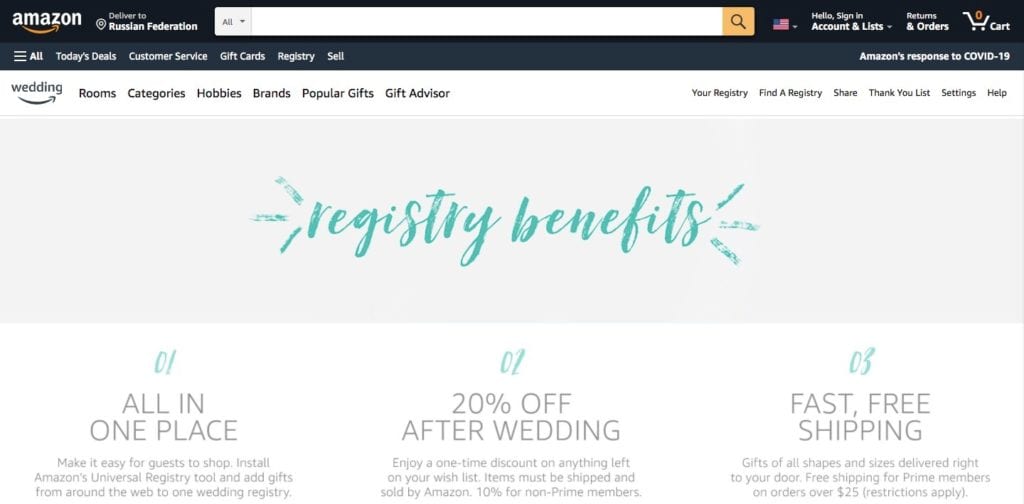
Amazon Wedding Registry is helping couples create desirable list of gifts and share it with their future wedding guests. It provides guarantee to couples and guests, that gifts purchased are a perfect match to a couple’s taste and needs.
The company strengthens the offer with free shipping and the ability to create a “thank you” lists to the guests using the marketplace data.
This approach increases traffic and revenue, building a feeling of an individual approach among customers and helping to turn them into life-time clients.
Another global e-commerce player, Alibaba, is establishing a different approach to fit each client’s individual needs.
They enhanced the virtual shopping mall ecosystem with a Request for quotation option.
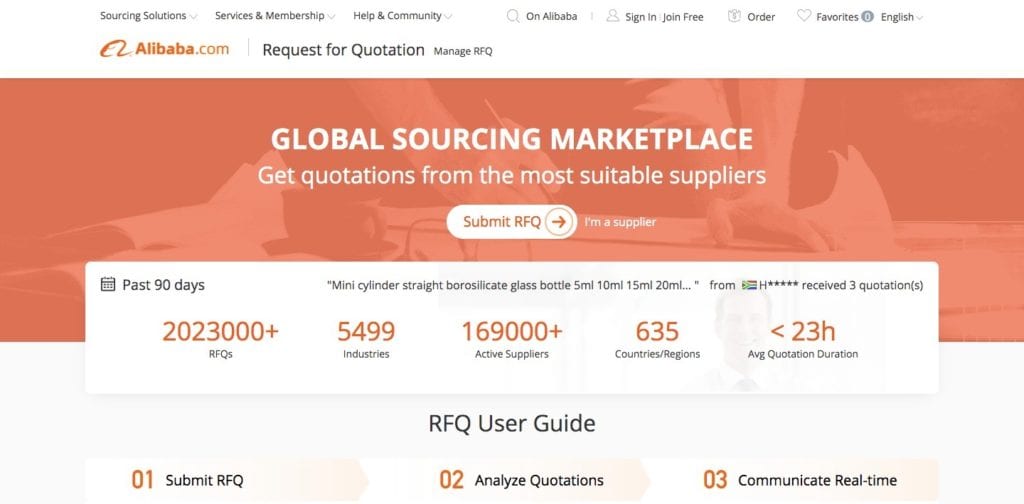
The option helps to attract customers to the multi vendor ecommerce platform by giving them a support in searching for the right seller.
Clients save loads of time that they would spend browsing hundreds of sellers and goods, trying to find an item that suits them. By putting a request with a detailed set of requirements to items or services that they need, they simply choose the right vendor among the number of suitable offers in a few minutes.
You can adopt this approach and create a similar program for buyers within your virtual marketplace.
Thereby, making peers promotion strategy research your daily routine, you’ll collect practical and fresh ideas to boost sales within your own multi seller ecommerce platform.

True Experience #3
Linda Parry, CEO of Product Launchers—an agency that promotes Amazon’s, Etsy’s, Wallmart’s, and other companies’ products—shares their marketplace product PR experience
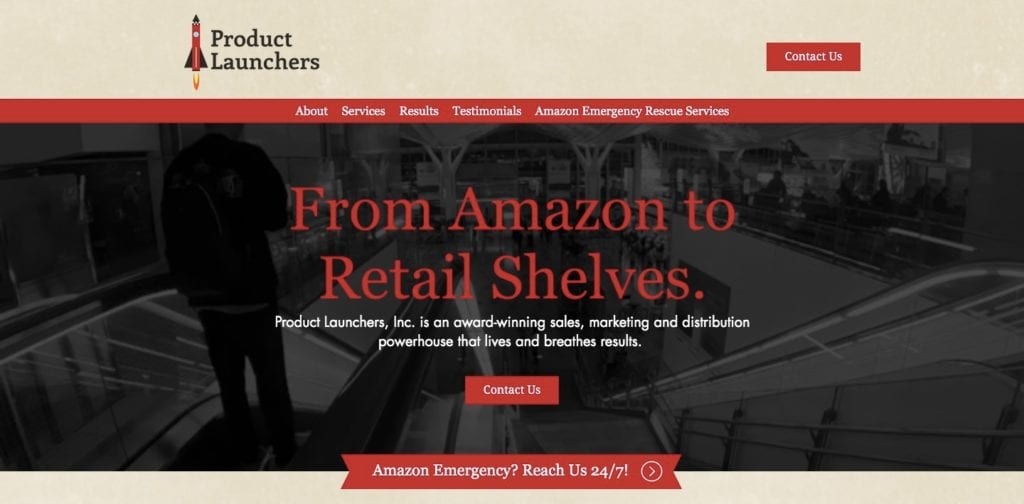
Product promotion is most effective when there is a synergy between all forms of outreach. A customer who sees a product on Amazon might not buy it unless there are positive reviews. An advertisement might get a customer’s attention, but is considered less objective than an ‘unbiased’ segment on a news program.
To avoid so much competition that your client gets lost in a sea of pitches, think outside the obvious. For example, what kind of content do you expect to see in a bridal magazine? Dresses, flowers, tuxedos, place settings. How about teeth whitening? Not the first thing that comes to mind, right? But who wants a brighter smile more than a bride? That’s why we pitched our client IGNITE Teeth Whitening System to Weddings Magazine and secured a media hit.
Every product, service, entrepreneur and inventor has a story to tell. Through PR and social media, we tell those stories, which helps generate more sales.
Invariably what works best is knowing your audience—media AND customer. By knowing who your potential customers are, you can identify where best to reach them. For example, baby boomers might be reading print newspapers, but millennials are getting their news online. Teens are using Snapchat, middle-aged housewives are on Facebook. Once you identify the customer, to engage in PR, you need to also know the media and how to talk to them. Beat reporters don’t have time to read lengthy pitches and pitching a blogger a topic unrelated to them is the quickest way to get yourself blocked.
Sales copy doesn’t work. Controversial topics have the likelihood of alienating segments of your potential audience. Cutesy and/humorous outreach will be misinterpreted or repelled by certain demographics. Informative, positive and compelling content works. Engaging with, not talking at, audiences’ works.
After our client, My Paint Saint, appeared on the Today Show, there was a rush to the website (and all site traffic was redirected to purchase through Amazon) and over 2,500 units were sold over the next 24 hours. That resulted in a burst of positive reviews on Amazon (which secured key positioning on the first page for the category search, a coveted position the manufacturer still maintains.)
True Experience #4
Scott, Head of Content of a performance marketing agency called Metric Digital that specializes in Amazon marketing, shares 3 tips on how to successfully sell on Amazon and similar marketplaces
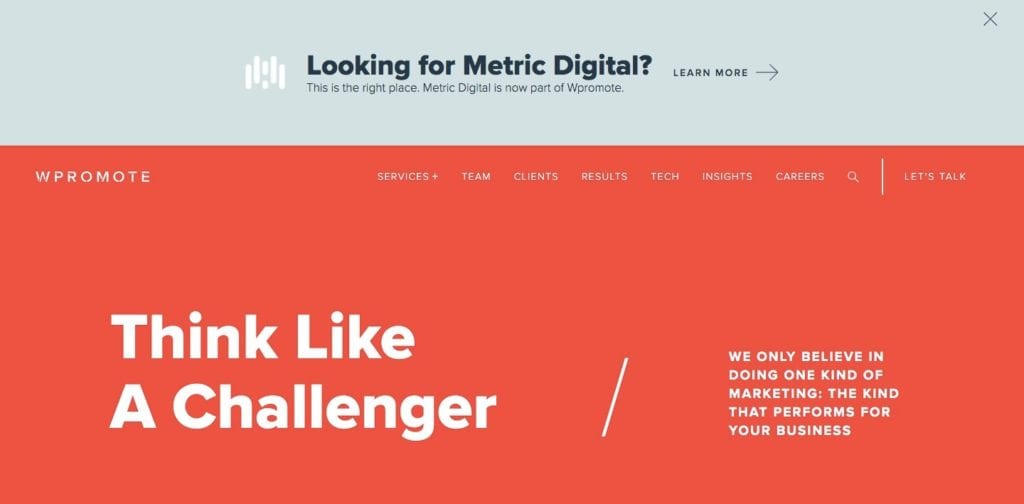
1. Reviews are everything. You can’t drive sales on Amazon unless you have reviews. And that can be a real challenge for companies whose price point is above average for what they’re selling. It’s the number one obstacle any seller has to overcome before selling on Amazon. Get them quickly, ubiquitously, and most importantly, ethically.
2. Incentivize reviews. It’s a paradox. Vendors who sell on Amazon don’t have reviews yet, because they don’t sell yet. It’s the chicken and the egg issue. Brands should be tapping customers and encouraging them log in and write reviews. They can also incentivize those customers with high NPS score to do so, since they are loyal fans.
3. Control your brand. If you sell wholesale, then there’s a good chance your retailers already have your product up on Amazon. In that case, you need to be there and you need to be controlling your brand. Create A+ Pages or Enhanced Brand Content (EBC) as well as Brand pages. And just know that once you go to Amazon you give up an amount of control (just how much is a sliding scale of whether you’re just selling there on Seller Central, using FBA, or a full on wholesale Vendor).
Knowing your online customers’ needs and aligning your marketplace type and features to fit them flawlessly, sharing your own best marketing practices with your vendors, and collecting industry insights to help your sellers thrive are the proper basis to focus your promotion activities.
Though, bear in mind that all marketing efforts are a waste of time and money if the platform you use for your marketplace doesn’t fit your vendors’ and customers’ needs. Together with a well-tuned promotion, it’s another core pillar to thrive in the e-commerce marketplace industry.

Yan Anderson is the Head of Content Marketing at CS-Cart with over 10 years of experience in the eCommerce industry. He's passionate about explaining complicated things in simple terms. Yan has expertise in building, running and growing eCommerce marketplaces. He loves to educate people about best practices, new technologies, and trends in the global eCommerce industry.
